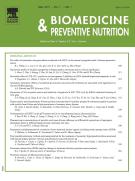Aspartame induces alteration in electrolytes homeostasis of immune organs in wistar albino rats - 30/05/14
 , Sheela Devi Rathinasamy ⁎
, Sheela Devi Rathinasamy ⁎ 
Abstract |
Aspartame is rapidly and completely metabolized in humans and experimental animals to aspartic acid (40%), phenylalanine (50%) and methanol (10%). Methanol, a toxic metabolite is primarily metabolized by oxidation to formaldehyde and then to formate. These processes are accompanied by the formation of superoxide anion and hydrogen peroxide. This study is focused to understand whether the oral administration of Aspartame (40mg/kg bw) for 15 days, 30 days, and 90 days have any effect on immune organs. Damage to plasma membrane was assessed by levels of membrane-bound ATPases. Oxidative stress status was assessed by alterations in level of lipid peroxides, protein carbonyls, protein thiol and lipid-soluble antioxidant vitamin E. To mimic human methanol metabolism, folate-deficient animals were used. There was decrease in all membrane-bound ATPases activities in immune organs. Aspartame administration to rats inducing excess free radical generation is confirmed by increase in lipid peroxidation, obvious which is also again substantiated by the elevated protein carbonyl and decrease in protein thiol in this study. These excess free radical generations also decrease the cellularity (reduction in organ weight and cell count) of immune organs.
Le texte complet de cet article est disponible en PDF.Keywords : Aspartame, ATPases, Immune organs, Oxidative stress, Protein carbonyl, Protein thiol
Plan
Vol 4 - N° 2
P. 181-187 - avril 2014 Retour au numéroBienvenue sur EM-consulte, la référence des professionnels de santé.
L’accès au texte intégral de cet article nécessite un abonnement.
Déjà abonné à cette revue ?

